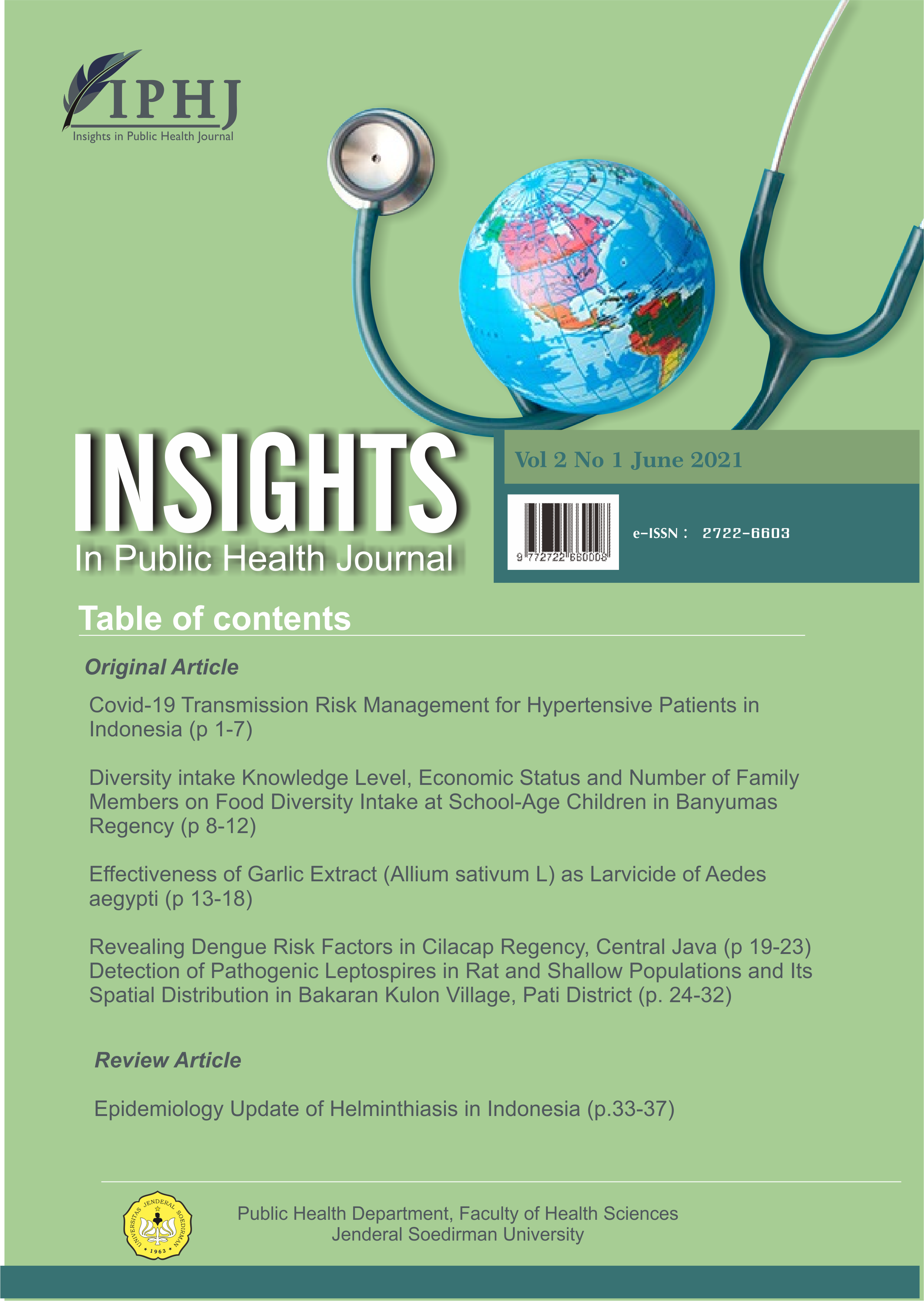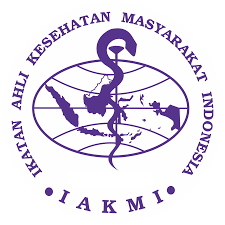Effectiveness of Garlic Extract (Allium sativum L) as Larvicide of Aedes aegypti
Abstract
The problem of disease due to dengue virus infection is still a health concern, especially in tropical countries. One of the efforts made is to explore vegetable insecticides as larvicides for dengue vectors, the Aedes aegypti mosquito. Garlic (Allium sativum. L) is believed to be able to repel or inhibit and even kill the larvae of the Aedes aegypti mosquito because garlic has a strong aroma. This study aims to determine the effectiveness of garlic extract as a larvicide of Aedes aegypti. The research method used is a quasi-experimental with a post test only control group design. The larvae of Aedes aegypti used were instar I-IV larvae which were divided into treatment groups and control groups. In the treatment group, Aedes aegypti larvae were given garlic extract with 5 concentrations, namely 0.10% (0.2 mL extract + 200 mL water), 0.20% (0.4 mL extract + 200 mL water), 0.30% (0.6 mL extract + 200 mL water), 0.40% (0.8 mL extract + 200 mL water) and 0.50% (1 mL extract + 200 mL water), while the control group was only given 200 mL mineral water. The results of observing the effectiveness of garlic extract as Aedes aegypti larvicides in all instars showed that the higher the concentration of garlic extract, the more Aedes aegypti larvae died, and the higher the larval instar the higher the concentration needed to kill it. . In the first instar larvae, the LC50 is 0.24%, the second instar is 0.15%, the third instar is 0.16% and the fourth instar is 0.24%, so the higher the instar, the higher the LC50 or concentration needed to kill 50% of the larvae.
Key words : larvacide, Aedes aegypti, Allium sativum










